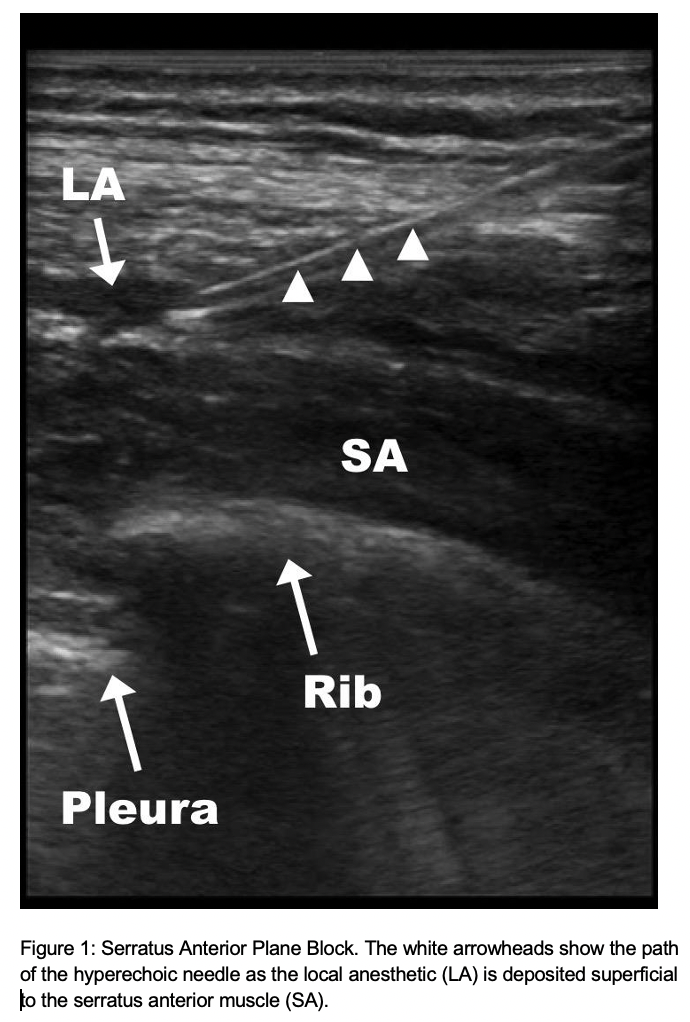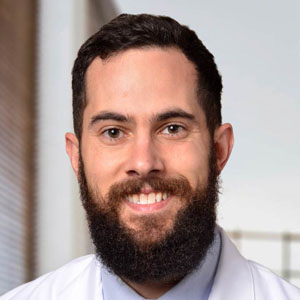Pain, in its many forms, is one of the primary reasons patients seek emergency care. As emergency providers, we have a number of therapeutic options in our armamentarium to provide analgesia. One of our priorities is to treat pain effectively without causing undue harm from side effects. Therefore, many people are turning to regional anesthesia as a hopeful solution to some of these problems. Regional anesthesia with nerve blocks has obviously been used for many years in the perioperative setting, but it is only with the increasing comfort with ultrasound guidance that it has come into the purview of emergency practitioners. Ultrasound makes these initially intimidating procedures more approachable, easier, and safer. By being able to see your needle, avoid vasculature, and actually visualize the local anesthetic in the correct location - this becomes a powerful tool that we can use for many indications in the emergency department. This article is not going to get into the details of how to perform these procedures, but simply introduce a few examples of how these blocks might be valuable in emergency medicine practice. Distal extremity blocks are a good place to start. You can easily identify and block the radial, ulnar, or median nerves in the forearm to provide excellent anesthesia for hand lacerations or fractures. Specifically, an ulnar nerve block will give you the easiest and most comfortable reduction of a boxer’s fracture you have ever done. Similarly there is no better way to remove a foreign body from the sole of the foot than by using a tibial nerve block at the ankle. Once you start to feel more comfortable with blocks, a fascia iliaca plane block is a great one to learn. This will provide high quality analgesia for your patients with hip fractures. This has been demonstrated to really benefit this population of usually older patients who might be in severe pain but also be at risk for side effects from large doses of opioids. Nerve blocks can also be done to prevent pain that we are about to cause our patients. For example in some patients it is hard to get adequate local anesthesia for an internal jugular central line placement. It is not hard to learn the superficial cervical plexus block, which can anesthetize the neck and make the procedure much more tolerable for patients. After all - hopefully you are already on the patient’s neck with your ultrasound probe! This is a fast moving field and there are new blocks or indications for blocks that are being reported all the time. The serratus anterior plane block is a fairly recently described block that has revolutionized the way we can treat patients with multiple rib fractures. By injecting a large volume of long acting local anesthetic in this plane, you can relieve the patient’s pain and help them breathe much more comfortably! Although performing nerve blocks is within the skill set of emergency physicians, you should not try nerve blocks without appropriate training. The Emergency Medicine Nerve Blocks and Ultrasound Guided Regional Anesthesia courses taught at Gulfcoast Ultrasound Institute offer comprehensive training and hands-on experience that will enable you to immediately implement these skills into practice. There is also an abundance of free resources that can be helpful (see below). You have to be aware of contraindications to regional anesthesia such as altered mental status or concern for compartment syndrome. Importantly, it is paramount that you know about LAST (local anesthetic systemic toxicity) and can recognize the symptoms. Always calculate the toxic dose for your patients’ weight and comorbidities so you do not give them too much local anesthetic. All patients that are getting proximal blocks should be on a cardiac monitor and you should have lipid emulsion therapy readily available if you get into trouble. Ultimately, ultrasound-guided regional anesthesia is an incredibly valuable skill set that will serve you well in the emergency department. You can feel confident you are delivering the best possible care for your patients with painful conditions or necessary painful procedures. There are countless indications not discussed here. These blocks are rewarding for everyone involved. Do yourself and your patients a favor and start learning some of these nerve block techniques so you can start providing better care for pain in the emergency department today. Visit gcus.com or call 727-363-4500 for more information on the upcoming Emergency Medicine Nerve Blocks and Ultrasound Guided Regional Anesthesia courses being offered. Resources: 5 Minutes Sono Nerve Block Videos at CoreUltrasound.com https://www.coreultrasound.com/5minsono-nb/ Highland Ultrasound http://highlandultrasound.com/ NYSORA (New York School of Regional Anesthesia) https://www.nysora.com/techniques/ Block Guru App https://pajunkusa.com/stories/storydetail/the-block-guru-app/ Safe Local App https://apps.apple.com/us/app/safelocal/id1440999841
(727)363-4500
|
CREATE ACCOUNT
|
LOG IN
|
CART
|
Item(s) added to cart
Proceed to Checkout
Continue Shopping



